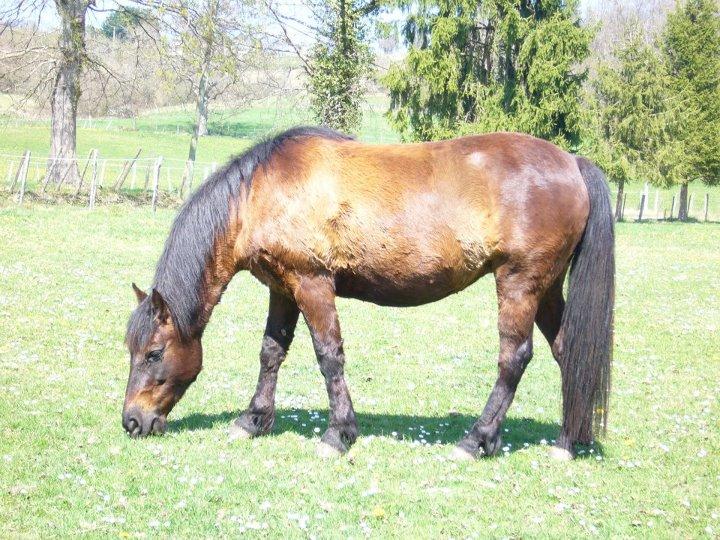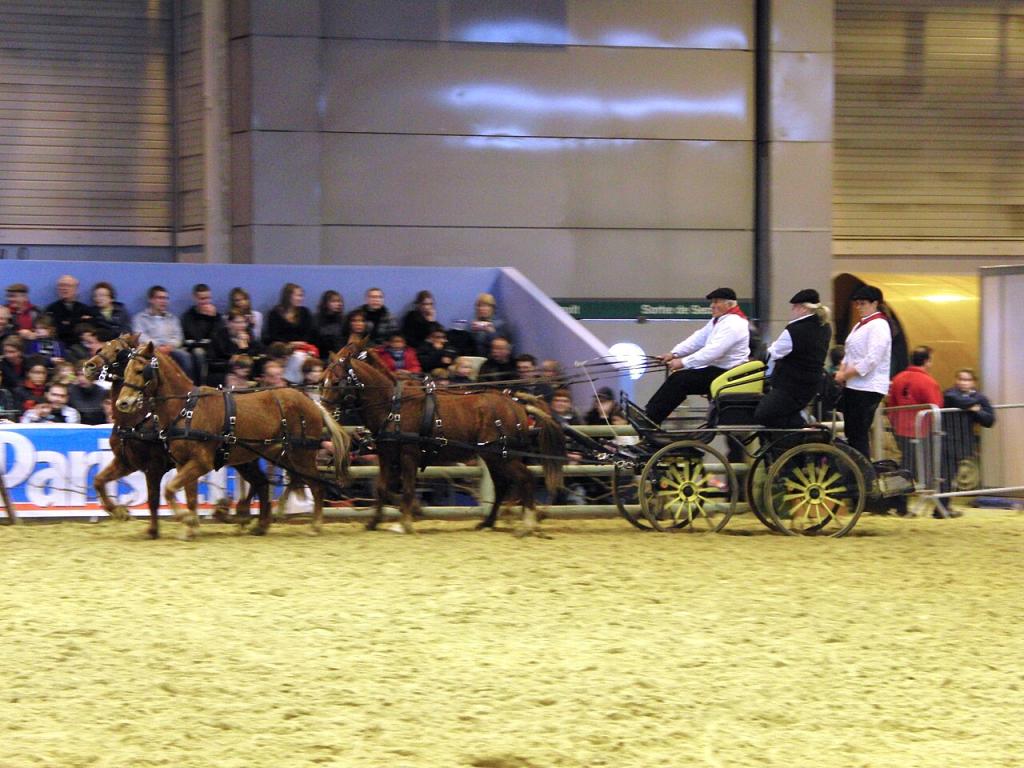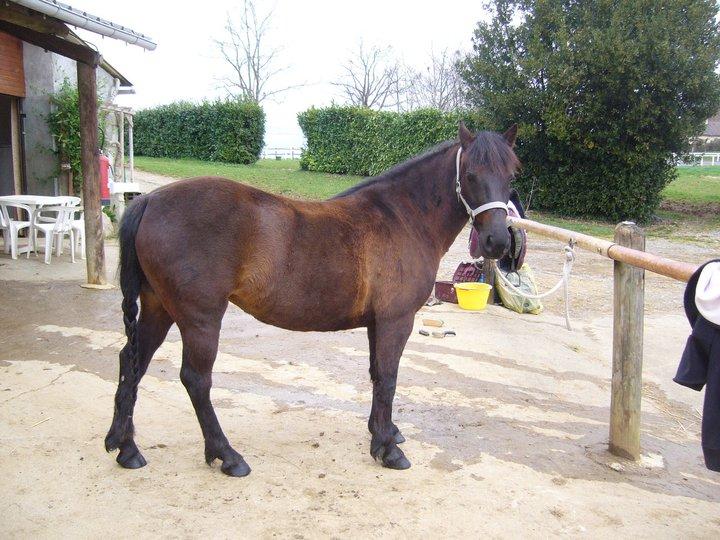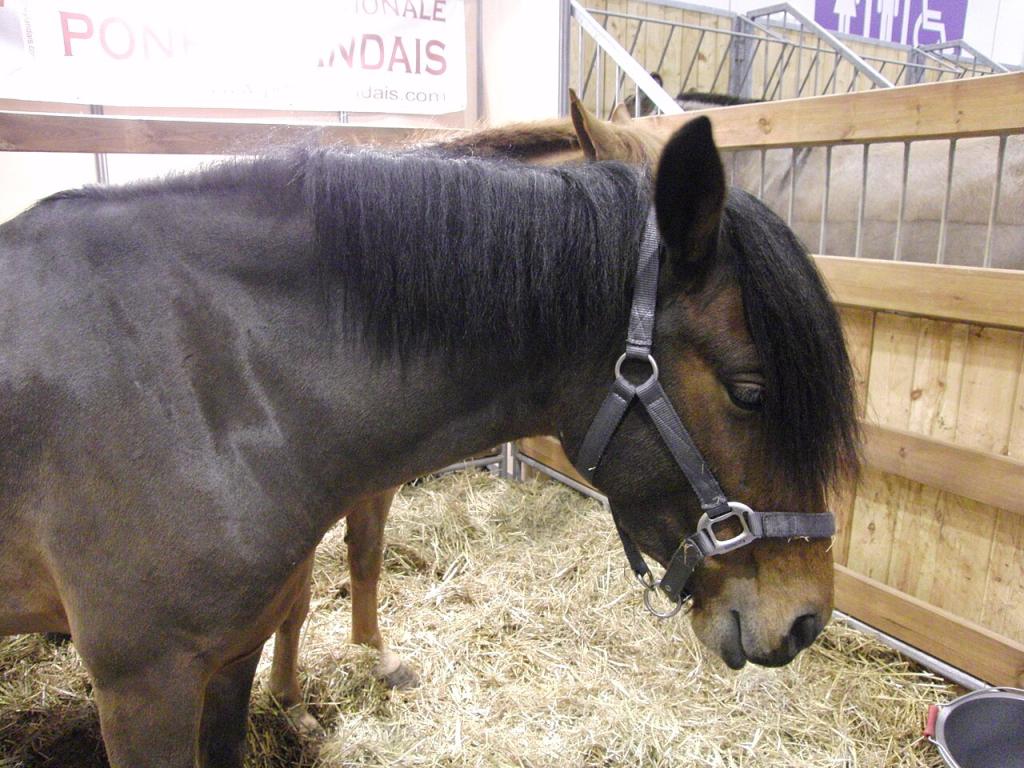
Continent: Europe
Country: France
Weight: 250 – 400 kg
Height: 118 – 148 cm



The Landais Pony is a very old French breed, originating from the southwest of France, specifically from the Landes department in the Nouvelle-Aquitaine region.
It traces its roots to two historical types:
– the Poney des Pins (or Lédon), which lived in the coastal dunes and Landes plains;
– and the still-existing Poney Barthais, which evolved in the Barthes de l’Adour, a series of wetlands and flood zones around the town of Dax.
The latter is the direct ancestor of the modern Landais Pony.
Despite major disruptions caused by wars, agricultural mechanization, and the sharp decline in population, the breed survived thanks to a conservation program launched in 1967. This initiative allowed for the restoration of genetic diversity through moderate crossbreeding with Arabian and Welsh stallions, while preserving its original rustic type.
Today, the Landais Pony is one of the last surviving indigenous pony breeds in France, deeply connected to its natural environment and raised with respect for its traditional aptitudes.
The historic breeding cradle of the Landais Pony lies in the Landes department, Nouvelle-Aquitaine, more precisely in the Barthes de l’Adour, wetlands near Dax. These humid, flood-prone areas, rich in biodiversity, helped shape a pony that is naturally rustic, frugal, and well adapted to difficult environments.
Today, breeding remains strongly rooted in this original region, but has also expanded to other parts of France, notably:
– in the Pays de la Loire,
– and occasionally in other regions of the country.
Internationally, although the stud-book only recognizes official breeders based in France, there are a few breeding efforts in Belgium, Spain, andSwitzerland, reflecting growing interest abroad.
The breed association continues to protect the link to the pony’s native territory, while supporting a controlled and reasoned development beyond its homeland.
The Landais Pony holds significant genetic value among French pony breeds, as it represents one of the last preserved rustic indigenous populations in France.
Its remarkable adaptation to wet environments and natural resistance to harsh climates make it a valuable genetic reservoir for the selection of hardy, low-maintenance, and easy-to-keep ponies.
Thanks to its harmonious conformation, medium size, and balanced temperament, the Landais Pony is a potential contributor to the improvement of other pony breeds, particularly in programs seeking to enhance hardiness, disease resistance, or versatility.
The controlled integration of Arabian and Welsh bloodlines has enriched its genetic pool without compromising its identity.
The current genetic diversity of the breed is closely monitored by the National Association and remains a central focus of its conservation and breeding program.
Ancient roots in the Southwest :
The Landais Pony descends from a very ancient population rooted in southwestern France, primarily the Landes department. It comes from the Poney Barthais, itself related to Celtic-type ponies that once populated the Atlantic coast.
Two pony types coexisted:
– the now-extinct Poney des Pins (Lédon),
– and the Poney Barthais, which thrived in the Barthes de l’Adour, near Dax.
These ponies lived in semi-wild conditions, shaping endemic, hardy, and resilient animals.
A breed threatened by modern history :
In the 20th century, mechanized farming, the disappearance of traditional uses, and the world wars almost caused the breed's extinction. By the 1960s, fewer than ten mares remained. The situation was critical.
Turning point: 1967 conservation program :
In response, a conservation plan was launched in 1967 with the help of passionate breeders and local authorities. Arabian and Welsh stallions were introduced selectively to enhance certain traits while preserving the original rustic type. This marked the beginning of the breed's revival.
Opening of the stud-book and official recognition :
On November 15, 1971, the official stud-book was created, marking the breed’s formal recognition and the start of structured breeding. The ANPL was later founded to coordinate the efforts of breeders and ensure adherence to breed standards, rusticity, and genetic diversity.
A living heritage to protect :
Today, although still classified as a rare breed, the Landais Pony is celebrated for its unique cultural heritage and genetic value. Ongoing efforts promote it through events, competitions, and educational programs. Its history is a model of resilience and recovery among endangered horse breeds.
The Landais Pony is known for its balanced temperament and natural liveliness. Coming from a wild and humid environment, it has retained sharp intelligence, curiosity, and a strong ability to adapt. It is a gentle yet energetic pony that thrives when well-trained.
It often forms a strong bond of trust with its rider, making it an excellent companion for children and suitable for educational and leisure activities.
The pony also displays courage, stamina, and a willing forward-going nature, while remaining calm and docile in daily interactions.
Its rustic mindset, inherited from its semi-wild origins, can make it a bit independent, but never aggressive. With proper training, the Landais Pony becomes a reliable partner for leisure riding, outdoor activities like driving, trekking, or TREC.
The Landais Pony is now enjoying a renewed interest, thanks to its versatility, child-friendly size, and good temperament. Once on the brink of extinction, it is now recognized as a valuable breed to preserve, both for its heritage value and functional potential.
Thanks to the conservation program started in 1967, the population has stabilized, and births are regularly monitored by the ANPL (National Association of the Landais Pony). Current breeding efforts focus on maintaining rusticity, while also developing sporting qualities for disciplines like driving, trekking, or even light show jumping and dressage.
Future development also relies on increased visibility of the breed among the general public, riding schools, and young riders, through communication campaigns, public presentations, and educational partnerships.
However, the limited geographic distribution, the small number of breeding individuals, and the risk of genetic bottlenecks remain major challenges. The breed’s genetic diversity, though monitored, requires active conservation measures to ensure its long-term survival.
The Landais Pony is recognized for its natural hardiness and great resilience. Having evolved in wet and exposed habitats, it has developed strong resistance to common diseases and enjoys good longevity.
This breed features strong bones, sure-footedness, and an overall healthy constitution, making it rarely prone to lameness or joint issues when kept in suitable conditions.
However, certain genetic predispositions or particular sensitivities must be monitored:
– Recurrent summer dermatitis (sweet itch) is a disqualifying fault in the breed standard, affecting individuals sensitive to Culicoides midge bites.
– Excessive white markings on the head and limbs can also be grounds for disqualification, especially in stallions.
– Wall eyes (blue or parti-colored eyes) are explicitly excluded from the stud-book.
Beyond these exceptions, the Landais Pony is a low-maintenance, easy-to-care-for breed, especially resistant to climate variations, making it ideal
for extensive or outdoor rearing systems.